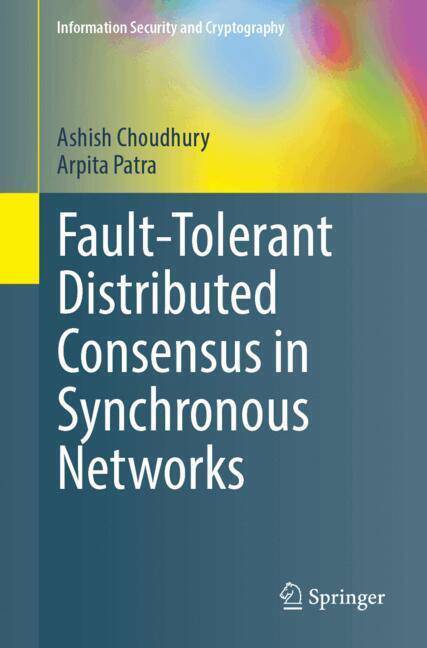
- Afhalen na 1 uur in een winkel met voorraad
- Gratis thuislevering in België vanaf € 30
- Ruim aanbod met 7 miljoen producten
- Afhalen na 1 uur in een winkel met voorraad
- Gratis thuislevering in België vanaf € 30
- Ruim aanbod met 7 miljoen producten
Omschrijving
Fault-tolerant distributed consensus is a fundamental concept, both in cryptography as well as distributed computing. Ever since the inception of the problem by Lamport et al in 1982, the problem has been widely studied, both in cryptography as well as distributed computing community and several fundamental results have been obtained regarding the possibility, feasibility and optimality of the consensus protocols in various network models and adversarial settings. The problem has generated revived interest from several other communities over the last few years, after the advent of Blockchain protocols. Traditionally, the consensus protocols are studied either in the synchronous or in the asynchronous communication setting and very often the protocols in the former category serve as the basis for the protocols in the latter category. The focus of this book will be on the synchronous communication setting. The book presents all the seminal possibility and feasibility results in this model ever since the inception of the consensus problem, with formal security proofs. Even though the synchronous corruption model may seem weaker than the more practical asynchronous communication model, designing protocols in the synchronous model turns out to be non-trivial and demands sophisticated and highly advanced techniques. Moreover, understanding protocols in the synchronous setting often constitutes the first stepping stone to understanding the more complex asynchronous consensus protocols. The topic of synchronous consensus protocols in itself is a very vast and important topic to be covered in a single book.
Specificaties
Betrokkenen
- Auteur(s):
- Uitgeverij:
Inhoud
- Aantal bladzijden:
- 312
- Taal:
- Engels
- Reeks:
Eigenschappen
- Productcode (EAN):
- 9783031804595
- Verschijningsdatum:
- 23/04/2025
- Uitvoering:
- Paperback
- Formaat:
- Trade paperback (VS)
- Afmetingen:
- 155 mm x 235 mm

Alleen bij Standaard Boekhandel
Beoordelingen
We publiceren alleen reviews die voldoen aan de voorwaarden voor reviews. Bekijk onze voorwaarden voor reviews.











